Bodhipaksa's Blog, page 6
November 2, 2014
Check out Stoic Week 2014
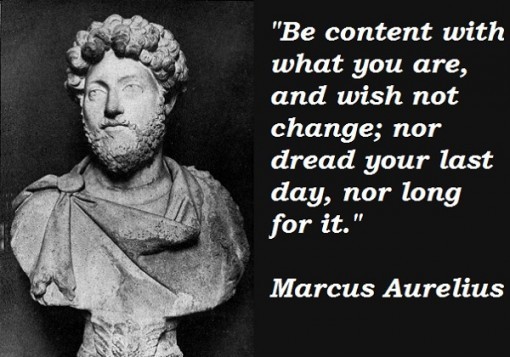
Stoic Week 2014 is an online international event taking place from Monday 24th to Sunday 30th November. The week is part of a multi-disciplinary project called Stoicism Today, which is helping to revive the ancient philosophy of Stoicism in modern life.
I’ve mentioned stoicism on this blog before, in articles based on quotes by Marcus Aurelius, who I’ve described as “the original Western Buddhist” because of stoicism’s striking similarities to Buddhism.
Stoicism inspired Cognitive Behavioural Therapy (CBT) and modern resilience psychology, and is a powerful philosophy for helping people flourish in the face of adversity. At a time when many schools and companies are interested in teaching resilience and character, it’s never been more relevant.
Modern fans of Stoicism include Derren Brown, Adrian Edmondson, Elle MacPherson, Tom Wolfe and Jonathan Newhouse (CEO of Conde Nast International). Stoic Week will hopefully help more people discover the practical usefulness of this ancient philosophy, and while allowing us to measure its therapeutic effectiveness.
Anyone can participate in Stoic Week by following the daily instructions in the Stoic Week 2014 Handbook, which will be made freely available online. Over 60 schools have already signed up to take part, as well as philosophy groups, mental health charities and a prison philosophy club.
There is also a one-day event being held at Queen Mary, University of London, on November 29th, with places for 300 people, at which leading experts on modern Stoicism will be speaking.
More information on Stoic Week 2014.
More information on the London Event.
Related posts:
The Power of Mindfulness: a four-week course starting Dec 3
12-week videoconference meditation workshop, with Bodhipaksa (starts Jan 24)
Wow! Check this out, and do make sure that you watch right to the end, so that you…
Related posts brought to you by Yet Another Related Posts Plugin.
October 31, 2014
Another great self-compassion resource
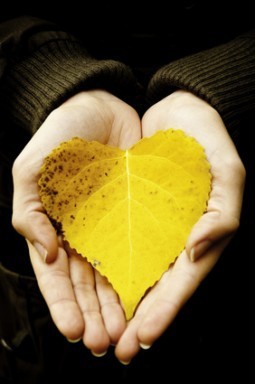 This morning I shared some resources I’d put together on the subject of self-compassion, but I just realized that there’s another great resource of mine that I can point you to. It’ll be especially ideal if you can’t make it to my November 22 workshop at the NY Insight Meditation Center, or a good primer if you can.
This morning I shared some resources I’d put together on the subject of self-compassion, but I just realized that there’s another great resource of mine that I can point you to. It’ll be especially ideal if you can’t make it to my November 22 workshop at the NY Insight Meditation Center, or a good primer if you can.
This resource is a video presentation on “How to Stop Beating Yourself Up,” on En*Theos Academy, which is a kind of Netflix for spirituality and personal development.
This class presents my latest teaching shared in a fun, high energy, 30-minute video format (you can also download MP3s and a PDF for the class). And it’s free! Check it out here!
The online course is based on my Top 10 Big Ideas on self-compassion, Here’s a sneak peek at the Top 5:
Self-Compassion is Not Self-Indulgence
Self-Compassion Makes Us Stronger, Not Weaker
Being Hard on Ourselves is Not Essential for Motivation
Self-Compassion Starts When You Accept that It’s OK to Suffer
Most of Our Suffering is Self-Inflicted
Click here to check out my class at the Academy for Optimal Living and you’ll get the rest of my Big Ideas along with my best advice on the topic.
Hope you love it!
Bodhipaksa
P.S. I’m not the only one serving up wisdom at the Academy. From health, nutrition and fitness to creativity, productivity, spirituality, relationships and parenting, hundreds of extraordinary teachers are sharing their expert advice on everything that goes into optimizing our lives – all in one place!
There are already 300+ courses to choose from (with 100+ new classes added every month), each with 10 Big Ideas that can change your life. Check out the Academy’s class catalog here. It’s huge!
Related posts:
The Power of Self-Compassion: A Workshop in Toronto, Oct 19, 2013
Fake Buddha Quote: “In separateness lies the world’s great misery, in compassion lies the world’s true strength”
Some great advice on distraction, focus, and creative productivity
Related posts brought to you by Yet Another Related Posts Plugin.
How to stop beating yourself up
 “How to stop beating yourself up” is a workshop I’m teaching at the New York Insight Meditation Center on November 22. In this workshop I’ll be introducing, step-by-step, the skills of self-compassion. If you live in the area I hope you’ll be able to join me. Click here for more information on the workshop.
“How to stop beating yourself up” is a workshop I’m teaching at the New York Insight Meditation Center on November 22. In this workshop I’ll be introducing, step-by-step, the skills of self-compassion. If you live in the area I hope you’ll be able to join me. Click here for more information on the workshop.
But we have a world-wide community here, and most of you won’t be able to attend.
I hear from a lot of people around the world who create suffering for themselves through self-criticism and self-hatred, and so I want to share some articles on self-compassion that I hope will be helpful. (And if you do live near NYC, this will give you an idea of the ground we’ll be covering.)
Self-compassion webinar. This is a recording of a presentation I did for the Zen Habits community, with a Q&A session at the end. This is one of the most recent pieces I’ve done, and it’s close to my current approach to teaching self-compassion, which is always evolving.
Cultivating self-compassion. This is also pretty much in line with what I’ll be teaching in NYC.
Developing compassion. What’s compassion? What’s suffering? How do we practice self-compassion?
Transforming hurt and anger through self-compassion . This article’s from several years ago, but I think it’s still useful.
Self-compassion for writers (and other tortured souls). The principles in this article are applicable to anyone.
Self-hatred, self-compassion, and non-self. Why the teaching of self-compassion isn’t incompatible with the Buddhist teaching of non-self.
Self-compassion is not selfish. Why practicing self-compassion is not selfish.
Meditating with IBS (Irritable Bowel Syndrome). This one includes an application of self-compassion principles to the pain and discomfort of IBS. Again, these principles can be applied to any emotional or physical pain.
“Let everything happen to you: beauty and terror. Just keep going. No feeling is final.” Rainer Maria Rilke. On accepting difficult or painful feelings.
Again, if you can join me on the 22nd, I’d love to see you, and to share my approach to living with kindness and compassion towards ourselves, and toward all beings.
Related posts:
How to stop beating yourself up
Self-hatred, self-compassion, and non-self
The Urban Retreat, Day 8: Developing compassion
Related posts brought to you by Yet Another Related Posts Plugin.
The teaching of the zombie Buddha
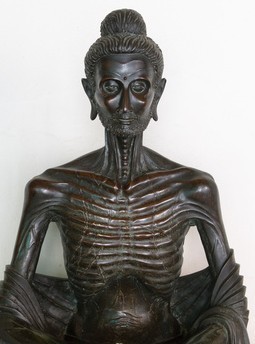 By day I’m a peace-loving Buddhist; by night a fearless zombie slayer.
By day I’m a peace-loving Buddhist; by night a fearless zombie slayer.
That second part isn’t entirely true. Last night I didn’t actually slay any zombies, and I certainly wasn’t fearless. In fact I was terrified as I cowered inside my car as a ravening undead creature tried to force its head through the half-open window, growling and gnashing with its fearful, gaping maw. I tried to stab at it with a pointed stick, but never quite made contact. (Pointed sticks are for vampires, I know, but you have to use the tools available to you, and that’s what I had at hand.)
As it happens, this was just one of the very realistic zombie adventures that wove themselves into my dreams last night. You might think that I’d wake up feeling disturbed after all these encounters with the living dead, but this morning I actually felt elated, because I understand these dreams and have learned to recognize them as a good sign.
I’ve had many similar nightmares in which I’ve been pursued by dangerous fiends, although these were my first confrontations with zombies. Curiously, whatever form these threatening figures take, they never actually harm me. They are also immune to my attempts to harm them. In these dreams it is they who are terrifying, but it is I who am violent. I hope that strikes you as curious.
What I’ve realized is that we don’t always dream from the viewpoint of our conscious daytime selves. Often our dreams give us an insight into what it’s like to be part of our subconscious.
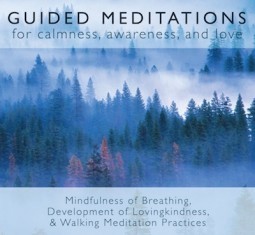 If you’re interested in Buddhism and meditation, we invite you to check out the guided meditation MP3s in our online store.Call to mind a unhelpful habit that you have—perhaps a tendency to binge-eat, or to get hooked on Facebook, or a tendency to be bad-tempered. Personifying those habits for a moment—which is quite reasonable since they are in fact quite major parts of a person—think of how meditation must appear when seen from their point of view. They don’t want to change, and certainly doesn’t want to cease existing, and yet that’s what meditation is going to do to them. From the point of view of those habits, meditation is a threatening—even terrifying—force. This is true not just for meditation, but for all Dharma practice, which gently destroys who we are in order to birth a new us.
If you’re interested in Buddhism and meditation, we invite you to check out the guided meditation MP3s in our online store.Call to mind a unhelpful habit that you have—perhaps a tendency to binge-eat, or to get hooked on Facebook, or a tendency to be bad-tempered. Personifying those habits for a moment—which is quite reasonable since they are in fact quite major parts of a person—think of how meditation must appear when seen from their point of view. They don’t want to change, and certainly doesn’t want to cease existing, and yet that’s what meditation is going to do to them. From the point of view of those habits, meditation is a threatening—even terrifying—force. This is true not just for meditation, but for all Dharma practice, which gently destroys who we are in order to birth a new us.
In traditional Buddhist iconography, enlightened figures have both peaceful and wrathful aspects. The peaceful forms are as you would expect: figures meditating quietly, sometimes dressed in simple monastic robes, or sometimes adorned with jewelry, arrayed as princes or princesses. The wrathful forms, by contrast, are wildly dancing, often wreathed in flames. They’re clad in flayed skins, decorated with garlands of skulls, or draped with the corpses of humans or animals. These wrathful forms represent enlightenment seen from the viewpoint of our resistance. They are the zombies I’ve fought in my dreams.
My zombie dreams are encounters with awakening, which is why I’m happy that the undead came close to gnawing on my flesh last night. Something within me is in active pursuit of unskillful patterns of thought and action, and wants to transform them. Something inside me is trying to destroy the recalcitrant habits that cause me suffering. This pursuit is only terrifying in my dreams because I’m experiencing things from the point of view of my habits. Those habits don’t want to change, and so they flee and try to fight back. The forces of compassion and wisdom, on the other hand, may be perceived as threatening but never do any harm.
Last night’s dreams confront me with the fact that although of late I’ve been meditating daily, I haven’t been throwing myself into my practice in a way that’s going to lead to deep transformation. I haven’t been putting in enough hours, or practicing with sufficient diligence. And so I feel a joyful urge to cast myself into the midst of the zombie horde, and to be devoured. In other words I feel enthusiastic about meditating longer, going deeper, and surrendering myself to change.
When I’ve turned to face a threatening figure in my dreams, it’s been revealed as beautiful, wise, and compassionate. And I have confidence that when I meditate deep and long, sitting with any fear that arises, some creative part of me will bring about unexpected and unimaginable transformations in my being.
When we turn to face our fears, everything changes.
Related posts:
Department of homeland stupidity (II)
Gandharan Buddha seated in meditation, Seattle Asian Art Museum
When you harm others, you harm yourself
Related posts brought to you by Yet Another Related Posts Plugin.
October 29, 2014
Karma: it’s not just intention
 The other day I wrote about how karma isn’t the mystical and external “cosmic force” that many people think it to be — a force that impersonally metes out rewards and punishments: do good things and the sun will shine on your picnic, do bad things and it’ll rain.
The other day I wrote about how karma isn’t the mystical and external “cosmic force” that many people think it to be — a force that impersonally metes out rewards and punishments: do good things and the sun will shine on your picnic, do bad things and it’ll rain.
Instead, karma (according to the Buddha) is to do with the ethical status of our intentions and how those naturally lead to our becoming more mired in suffering or freed from it. Karma is psychology: do this, and you’ll feel that. Karma is about how your mind changes and becomes happier when you’re less selfish and more generous, less angry and more loving.
The word karma is basically another term for Buddhist ethics.
But the idea that karma is intention can be misused. I’ve seen lots of people, bull in a china shop–style, hurt others and then say that they didn’t do anything wrong because they didn’t have any intention to cause harm. That’s a narrow take on karma (and ethics), and one that doesn’t take into account the subtlety of the Buddha’s teaching.
Let’s look at a couple of examples of how we might play the “I can’t have done anything unskillful because I didn’t have bad intentions” game.
Fresh in my mind, because there’s a video [1] been circulating about this, is men cat-calling women in public. In the video I’m thinking of, Shoshana Roberts was filmed walking silently down the street by a friend with a hidden camera. Roberts was catcalled over 100 times in ten hours. That’s just the verbal interactions, not the whistles or stares. She was followed by one man who stalked her for five minutes, often staring intensely at her from the side. Others were demanding: “You don’t wanna talk?” Some turned critical or aggressive when they didn’t get a flirtatious response in return: “Someone’s acknowledging you for being beautiful — you should say thank you more.”
Now, I’m pretty sure most, if not all, of the men who catcalled Roberts thought they had good intentions. They probably felt they were complimenting her. But the experience of having your appearance (to be crude, your ass) commented on (“I just saw a thousand dollars!”) over and over again can be distressing. Needless to say, being followed by a stranger can be very threatening.
So this is an example of where we need to be aware of not just what we think are our intentions, but of the effect of our actions, which can reveal unacknowledged intentions. This is something the Buddha himself stressed:
Having done a verbal action, you should reflect on it: ‘This verbal action I have done — did it lead to self-affliction, to the affliction of others, or to both? Was it an unskillful verbal action, with painful consequences, painful results?’ If, on reflection, you know that it led to self-affliction, to the affliction of others, or to both; it was an unskillful verbal action with painful consequences, painful results, then you should confess it, reveal it, lay it open to the Teacher or to a knowledgeable companion in the holy life. Having confessed it… you should exercise restraint in the future. [2]
Because the thing is, it’s not always easy to know our own intentions. It’s easy for us to fool ourselves. But if you know that many women don’t like being given random “compliments” on the street, then when you continue to do so it’s no longer about them, it’s about you. Your intention is revealed as not being about complimenting another person in order to do them a favor, but about expressing your (unwanted) attraction. It becomes about control: I catcall, you smile, and if you don’t cooperate I’ll get nasty. It becomes about you imposing your will on another person — which is why the women involved in that video have received death and rape threats for having made it.
Another example is vegetarianism. Most people who eat meat say that they like animals. They don’t think of themselves as cruel. Most of them are shocked by actual cruelty and want animal abusers to go to jail. And at the same time, they pay people to abuse animals on their behalf. They don’t think of themselves as doing this, but of course when they buy meat they’re financially rewarding people who raise animals in stressful and unnatural conditions, transport them, terrified, long distances in trucks, herd them into a slaughterhouse, shoot them in the head, hoist them into the air by their back legs, cut their throats, and then disembowel and dismember them in preparation for being shrink-wrapped and sold. Ka-ching.
There’s no overt ill intent when you pick up a steak at the supermarket, but that’s what you’re paying to have done on your behalf.
So if we’re going to take the Buddha’s teachings seriously as a guide for living, then we need to examine the consequences of our actions:
Having done a bodily action [like buying meat], you should reflect on it: ‘This bodily action I have done — did it lead to self-affliction, to the affliction of others, or to both? Was it an unskillful bodily action, with painful consequences, painful results?’ If, on reflection, you know that it led to self-affliction, to the affliction of others, or to both; it was an unskillful bodily action with painful consequences, painful results, then you should confess it, reveal it, lay it open to the Teacher or to a knowledgeable companion in the holy life. Having confessed it… you should exercise restraint in the future. [3]
Implicit in buying meat are attitudes like, “You are more useful to me dead than alive,” and “I kind of like you, but I’m hungry, and so I don’t mind you being killed.” The attitudes are rarely if ever experienced as overtly as that (and I’ve expressed them rather crudely here) but something like that is going on. I know. I used to eat meat.
We can’t avoid causing harm or hurting people. The Buddha pointed out that sometimes we have say things that will cause distress. But he set a high bar for this: we have to consider, before we say such a thing: are our words true, are they expressed kindly, are they intended to help the other person, are they crafted in such a way that they’ll lead to harmony, and are they expressed at the right time (a requirement that implies a good knowledge of the other person’s state of receptivity)?
We’re never actually going to get to the point where we never hurt or upset another person. People were upset with the Buddha all the time! But it’s a noble effort to work on reducing the amount of pain we cause.
There’s a kind of brutal honesty required in looking for our real intentions. We really need to acknowledge the harm we’re doing, and if it doesn’t seem at first that we have any intention to harm, we need to look deeper. When we’re systematically causing distress or harm to others, then there’s some attitude there that needs to be brought to light.
***
[1] 10 Hours of Walking in NYC as a Woman
[2] Ambalatthika-rahulovada Sutta
[3] Ibid.
Related posts:
“Our deeds determine us, as much as we determine our deeds.” George Eliot
It ain’t all karma
“Being in the moment”
Related posts brought to you by Yet Another Related Posts Plugin.
Wildmind as “right livelihood”
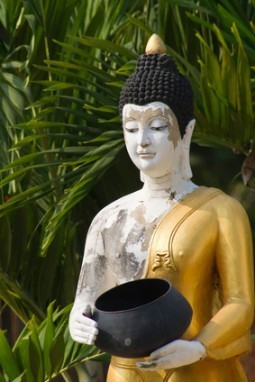 The reactions I get when I tell people that I did an interdisciplinary Master’s degree in Buddhism and business studies are very telling. Once people have stopped laughing or spluttering incoherently, they usually say that they’d assumed that Buddhism and business were mutually exclusive. But in fact the concept of “right livelihood” is part of the Buddha’s core teaching, the Eightfold Path.
The reactions I get when I tell people that I did an interdisciplinary Master’s degree in Buddhism and business studies are very telling. Once people have stopped laughing or spluttering incoherently, they usually say that they’d assumed that Buddhism and business were mutually exclusive. But in fact the concept of “right livelihood” is part of the Buddha’s core teaching, the Eightfold Path.
In Buddhist practice we’re encouraged to make every aspect of our lives an opportunity to practice mindfulness, compassion, balance, and insight. Since we all have to earn a living, our work needs to become part of our practice.
Our mission at Wildmind is to benefit the world by promoting mindfulness and compassion through teaching meditation. Almost all the events we run are free of charge. This year (our Year of Going Deeper) we’ve been running eight events, which have had an average of 1,200 participants each. These events are by donation.
We also sell guided meditation CDs, which provide the bulk of the income that allows us to teach. And because we were selling our CDs online, we started selling other meditation supplies, both to support others’ meditation practice and to subsidize our teaching.
We don’t pay ourselves much — enough to live with simple dignity, but not enough (unfortunately) that we don’t have money worries.
But our aim is always the promotion of meditation.
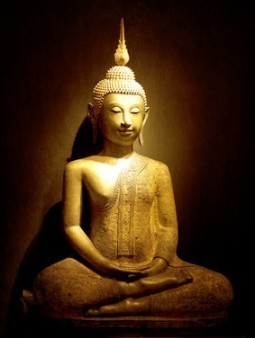 If you benefit from the work we do, please consider supporting Wildmind. Click here to make a one-time or recurring donation.There are other aspects to right livelihood as well. We strive to be honest. The three of us who work here strive to care for each other. We have a very harmonious office! We source fair trade products as much as possible. We support local small businesses (like the woman who makes our meditation cushions and the Buddhist former prison inmate who makes some of our malas).
If you benefit from the work we do, please consider supporting Wildmind. Click here to make a one-time or recurring donation.There are other aspects to right livelihood as well. We strive to be honest. The three of us who work here strive to care for each other. We have a very harmonious office! We source fair trade products as much as possible. We support local small businesses (like the woman who makes our meditation cushions and the Buddhist former prison inmate who makes some of our malas).
I’m mentioning all this because I know you have choices about what you can do with your money. You can support large businesses like Amazon that treat their workers badly, dodge taxes, and use their quasi-monopoly power to bully suppliers. Or you can support people like us — not a faceless corporation, but people trying to make the world a truly better place.
Your money is power. You have the power to choose (or least influence) the kind of world you want to live in. Your choices matter.
So when you’re buying gifts, we’d ask that you consider our online store.
We’re participating in a Triratna campaign called #ethicalchristmas, along with other Buddhist businesses. You can read about the how Evolution in the UK benefits the environment by selling recycled glass products, and how they’ve been supporting children orphaned by HIV in Thailand.
This is consumer power at work: the money of people like you being used to make the world a better place.
Related posts:
Day 8 of Wildmind’s 100 Day Meditation Challenge
A new online Wildmind community
Day 16 of Wildmind’s 100 Day Meditation Challenge
Related posts brought to you by Yet Another Related Posts Plugin.
October 27, 2014
“Our deeds determine us, as much as we determine our deeds.” George Eliot
 Karma is one of the most misunderstood Buddhist teachings. Often people think of karma as some kind of external, impersonal force that “rewards” us for our good deeds and punishes us for our bad. Consequently, even some people with an otherwise good understanding of Buddhism reject karma (usually along with rebirth) as being non-rational.
Karma is one of the most misunderstood Buddhist teachings. Often people think of karma as some kind of external, impersonal force that “rewards” us for our good deeds and punishes us for our bad. Consequently, even some people with an otherwise good understanding of Buddhism reject karma (usually along with rebirth) as being non-rational.
But karma is not external, nor is it about rewards and punishments. Karma simply means “action.” As an ethical term, it refers to the intentions underlying our actions, understood very broadly as anything we might think, say, or do. As the Buddha said, “I declare, intention is karma” (Cetan?ha? kamma? vad?mi).
What this means is three-fold:
First, ethically speaking our intentions can be seen as skillful or unskillful. Skillful intentions embody qualities of mindfulness, contentment, clarity, and care for the wellbeing of oneself and others. Unskillful intentions embody the opposites: they are motivated by impulsive selfishness, craving, confusion, and ill will.
Second, the importance of this distinction is that skillful actions (i.e. those arising from skillful volitions) lead on the whole to a decrease in unhappiness and an increase in ease. Unskillful actions, as you might expect, do the opposite. So in choosing our actions, we also choose (whether we know it or not) the consequences of those actions. We create much of our own suffering and happiness through our actions.
Third, habits are like muscles in the brain. By exercising a habit, it becomes stronger. As the Buddha said (and with apologies for the gender-specific language), “Whatever a monk keeps pursuing with his thinking and pondering, that becomes the inclination of his awareness,” and “What a man wills, what he plans, what he dwells on forms the basis for the continuation of consciousness.”
We create our consciousness through the actions we take — even our thoughts and words — and so, as Eliot observed, not only do we create our actions, but our actions create us.
Mindfulness (samm? sati), right view (samm? ditthi), and right effort (samma v?y?ma) can free us from this feedback loop, breaking open a circular track and turning it into a path that leads to awakening.
Mindfulness is necessary because without it, we’re submerged in our thoughts and feelings. Unable to stand back, we act unreflectively, strengthening our unskillful habits and creating suffering for ourselves.
Right view is important because it allows us to evaluate our potential actions. We can realize, “If I act in this way (e.g. angrily) then there will be painful consequences. On the other hand, if I act that way (e.g. with patience and kindness) then the consequences will be more beneficial for me and others.
Right effort is needed because it’s not enough just to know what we should do: we have to be able to act. Right effort is our commitment to bring into being and sustain the skillful, and to eradicate and prevent the further arising of the unskillful.
Karma is essentially a feedback mechanism, showing us the extent to which we’re in tune with reality.
Something the Buddha was quite clear about is that not everything we experience is a result of karma, even though some Buddhist traditions seem to have overlooked that fact. If it rains on your wedding day, or if you hit a red light when you’re already late, that’s not the result of your karma (neither is it ironic, as many people have no doubt pointed out to Alanis Morissette). But how you respond emotionally to such events, and how much you suffer as a result, does depend on your karma. If you’ve developed the emotional “muscles” of acceptance, patience, and flexibility, then you’ll be able to meet these events with elegance and with a minimum of suffering, or perhaps none. If your emotional muscles of impatience and anger have been bulked up by a lifetime of exercise, then once again you’ll experience these events as acutely frustrating, painful, and stressful.
The extent to which we’re able to meet life’s difficulties with grace is the measure of our wisdom.
One thing we have to be aware of is the tendency to say “My intentions were pure, therefore I’m not responsible for the fact that you got hurt by my actions.” Our own intentions are never entirely clear to us, and the Buddha pointed out that we have to look at the consequences of our actions in order to divine them. If we’ve caused pain to ourselves or others, then there was likely some kind of unskillful motivation mixed in with the skillful.
Karma, then, isn’t anything mystical. It’s simple a description of the psychology or happiness. It’s not an external force, but a feedback mechanism. And it’s not a judgement, but the natural result of how we act.
Related posts:
It ain’t all karma
How we use effort to get to a state of effortless meditation
Dealing with guilt and shame (Day 19)
Related posts brought to you by Yet Another Related Posts Plugin.
October 24, 2014
Listening as meditation
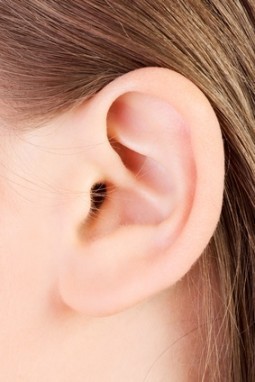 I recently wrote a post about how we can use listening as a way to quiet the mind, and how the arising of thoughts can become a “mindfulness bell,” calling us back to mindful attentiveness of the sounds around us. (The post was specifically about persistent thoughts that take the form of music, but the same approach works for all thoughts.)
I recently wrote a post about how we can use listening as a way to quiet the mind, and how the arising of thoughts can become a “mindfulness bell,” calling us back to mindful attentiveness of the sounds around us. (The post was specifically about persistent thoughts that take the form of music, but the same approach works for all thoughts.)
A commenter on that post directed me to a video featuring the Canadian composer, writer, music educator and environmentalist R. Murray Schafer. In the video, Schafer very cleverly leads us into a form of listening meditation, in which he guides us from being mindful of recorded sounds to the “real” sounds in our personal environment. There’s a clever fake-out toward the end of the video that I didn’t see coming!
Enjoy!
Listen by David New, National Film Board of Canada
Related posts:
Listening as a meditation practice
I’ve been listening to this album obsessively since downloading it last night.
Day 17 of Wildmind’s 100 Day Meditation Challenge
Related posts brought to you by Yet Another Related Posts Plugin.
October 22, 2014
Energize, Inspire, Enjoy
 Recently I offered a mantra that can accompany the out-breathing: Relax, Rest, Reveal. These words encourage us, respectively, to let go of unnecessary tensions in the body, to let go of unnecessary mental effort, and to be open and receptive to whatever is arising in our experience.
Recently I offered a mantra that can accompany the out-breathing: Relax, Rest, Reveal. These words encourage us, respectively, to let go of unnecessary tensions in the body, to let go of unnecessary mental effort, and to be open and receptive to whatever is arising in our experience.
I’d like now to offer a corresponding mantra for the in-breathing: Energize, Inspire, Enjoy. As with the previous mantra, each of the words has a specific function.
“Energize” connects us with the natural energy of the in-breath. Inhalation is dominated by the sympathetic nervous system, which isn’t always about “fight or flight” but is involved in any physical or emotional arousal. It’s no coincidence that we take a sudden in-breath when we’re startled, and the sympathetic nervous system is activated.
In our normal (non-startled!) breathing pattern, the sympathetic nervous system is active. Each time we inhale there is a subtle but noticeable sense of energy. The body becomes oxygenated and the heart beats a little faster. The body becomes more open and upright, and is more ready to act.
Saying the word “energize” as we inhale is a way of encouraging us to notice the gentle but arousing physical effects of the in-breath.
Saying “Inspire,” connects us with the same physiological processes, but it directs our attention more to the qualities of the mind and how they change as we breathe in. Just as the body becomes more alert and energetic on the in-breath, so does the mind. There’s a subtle but perceptible increase in our alertness, and the mind becomes brighter.
The word “Enjoy,” as you might expect, reminds us to appreciate any pleasure and happiness that are arising in our experience. This brings together everything: the out-breathing and the inbreathing; the body and the mind. Relaxing on the out-breath can be very enjoyable; so can feeling the energy of the in-breath. Resting the mind can be delightful; so can feeling the mind becoming brighter. Saying “Enjoy” as we breathe in encourages us to appreciate what’s positive in our experience. It encourages us to let happiness arise in response to the simple act of noticing the rhythm of our breathing.
Don’t try to do anything as you say these words. Don’t try to make anything happen. Just say the words, and let them have an effect.
Paying attention only to the out-breathing is calming, but in the long-term it tends to make us dull and sleepy. Paying attention only to the in-breathing is energizing, but we can easily become over-excited and distracted.
So if you’re going to use these two sets of mantras, use them skillfully. You may want to start a meditation with the mantras of the out-breath—especially if you need to calm the mind—and then move on to the mantras of the in-breath. But since this latter practice can lead to excitability, there will come a point when we need to drop the mantras and focus just on the breathing, and when we need to focus on the continuity of the breathing process—sensing it as an unbroken stream of sensations—without particular emphasis on either the breathing-out or the breathing-in.
Related posts:
Relax, rest, reveal
Some of your “distractions” are not distractions
Six ways of reflecting on impermanence
Related posts brought to you by Yet Another Related Posts Plugin.
October 15, 2014
Ebola: the Buddhist connection
 There’s an unusual connection between Ebola and Buddhism.
There’s an unusual connection between Ebola and Buddhism.
Ashoka Mukpo, one of a handful of Americans who have contracted Ebola, was identified soon after his birth as a reincarnated lama, or Tulku.
Mukpo is the son of Diana Mukpo, who married Tibetan lama Chogyam Tungpa in Scotland. Ashoka is not Trungpa’s biological son, but was raised as his child after his mother became pregnant while romantically involved with another of Trungpa’s followers, Dr. Mitchell Levy.
As a child, Ashoka was identified as the reincarnation of Khamyon Rinpoche, and he was enthroned as a tulku in Tibet.
Although Mukpo regards himself as a practicing Buddhist, he decided not to pursue a monastic life, and he works in the U.S. division of Human Rights Watch. He has also worked as a freelance cameraman for Vice News, NBC News and other media outlets. He spent two years working in Liberia, doing research for the Sustainable Development Institute, a nonprofit that highlights the concerns of workers in mining camps outside the west African country’s capital, Monrovia.
It was in Liberia that he was diagnosed with Ebola. Soon after he was moved to Nebraska Medical Center for treatment, where he is recovering.
NBC News reports that his parents say he “would likely rather the attention be paid to the West African countries that have been ravaged by the disease.”
Although many people in the west are anxious about Ebola, we should remember that the vast bulk of the suffering that’s taking place is in Africa, where thousands have been infected, and where its possible that a million people could contract the disease.
This article on Forbes suggests ways that individuals can contribute to fighting Ebola in Africa.
Related posts:
America’s forgotten Buddhist superhero
More adoption news
The Green Lama Strikes for Justice!
Related posts brought to you by Yet Another Related Posts Plugin.



